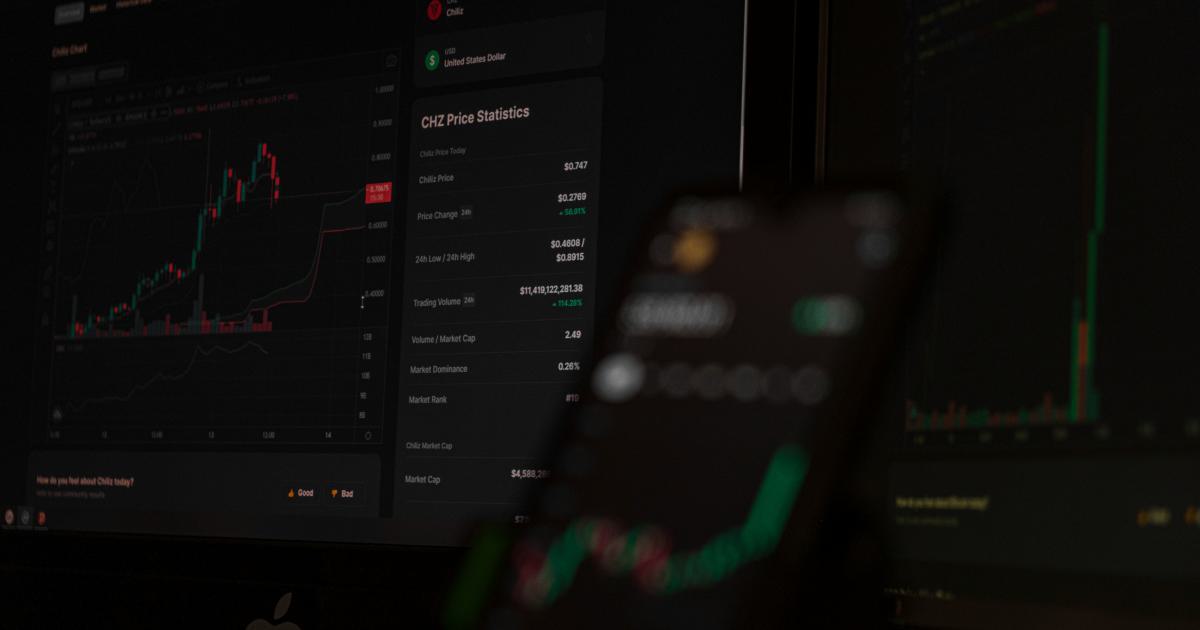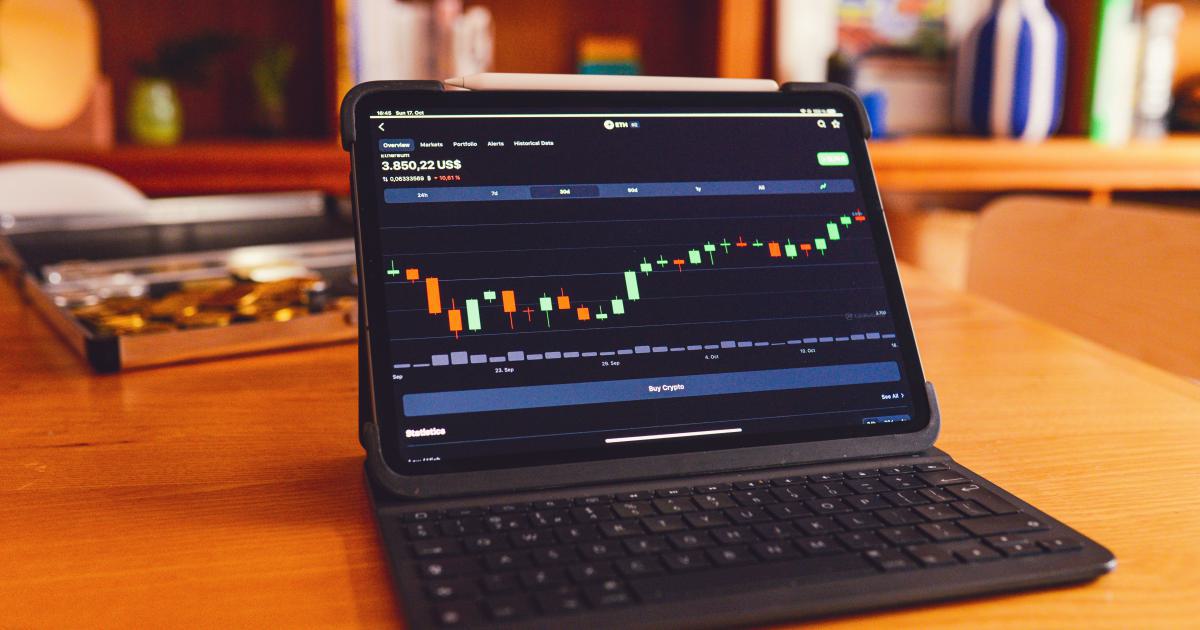Debunking the Myth: Algorithmic Trading Requires No Oversight

Introduction
Algorithmic trading requires no oversight – or so the myth goes. In a world increasingly dominated by high-speed computing and automated trading systems, many investors and industry outsiders assume that these sophisticated algorithms operate flawlessly, with no need for human supervision. However, this belief is not only misleading but dangerous. Myths like these have the potential to foster complacency, undermine effective risk management, and ultimately expose financial markets to unforeseen vulnerabilities. In this article, we will debunk several common myths surrounding algorithmic trading, examine the realities supported by rigorous evidence and expert opinion, and outline strategies to ensure that investments remain secure and well-managed.
We will delve into the origins and propagation of these misconceptions, critically analyzing why the notion that “algorithmic trading requires no oversight” continues to persist in public discourse despite ample evidence to the contrary. By taking a closer look at data and industry practices, we aim to provide a balanced view that not only demystifies automated trading but also reinforces the importance of effective, continuous monitoring of these systems. The responsibility, as we will learn, does not solely lie in the algorithm but also in human judgment and regulatory oversight.
"Even the best algorithm is only as good as the oversight ensuring it follows its designed strategy." – Financial Expert
Background
To appreciate the importance of oversight in algorithmic trading, it is crucial to understand both the historical context and the technological evolution of trading systems. Initially developed as computer-assisted tools for executing trades, algorithms have grown in complexity and capacity over the past few decades. From early versions of automated trading platforms to the modern high-frequency trading (HFT) systems, the field has seen remarkable advancements. However, this evolution has also given rise to misconceptions. Among these is the idea that one can simply “set and forget” these systems based on the assumption that, once created, they operate independently and flawlessly.
This myth began to spread in the early days of automation when the focus was on the potential for efficiency and the speed of transactions. With alluring success stories and profitable outcomes, some traders and critics alike believed that the algorithm itself eliminated the need for human evaluation. Over time, this narrative expanded, with oversights regarding risk management, volatile market conditions, and unforeseen system failures largely ignored. The assumption that "algorithmic trading requires no oversight" overlooks the inherent complexities and ever-evolving nature of financial markets.
In reality, algorithmic trading is a dynamic interplay between advanced programming, market data analytics, and continual human intervention. Oversight is needed not only to catch coding errors and adapt to new market conditions but also to ensure that regulatory changes and unexpected global events are appropriately managed. As algorithms operate at speeds that far exceed human capabilities, a minor error or oversight can cascade into significant financial risks and systemic issues within entire markets.
To further illustrate this interplay, consider the following table that encapsulates the myth versus reality in algorithmic systems:
| Aspect | Myth: No Oversight Needed | Reality: Continuous Monitoring Essential |
|---|---|---|
| System Reliability | Algorithms are infallible and self-correcting | Software bugs, data inaccuracies, and market anomalies require oversight |
| Risk Management | Risk is automatically managed by algorithms | Dynamic market conditions demand human intervention for effective risk control |
| Adaptability | Algorithms adapt perfectly to all scenarios | Algorithms must be updated for new market regulations and unexpected events |
| Regulatory Compliance | Automated systems can handle all compliance issues | Oversight is necessary to ensure that trading practices meet ever-changing regulatory standards |
Algorithmic trading tools are robust, yet they remain vulnerable to errors that could escalate if not properly monitored. The oversimplified assumption that “algorithmic trading requires no oversight” fails to recognize these pitfalls, thereby underscoring the need for continual human and institutional oversight.

Myth Busting
In this section, we will take a closer look at several pervasive myths about algorithmic trading and dismantle them using factual evidence, comparative analyses, and expert commentary. By doing so, our aim is to establish a deeper understanding of why proper oversight remains a crucial element in the realm of automated trading.
Myth 1: Algorithms Are Self-Sufficient
The Myth
One of the most widespread beliefs holds that once an algorithm is set up, it runs independently without requiring human intervention. This is often encapsulated in the claim that "algorithmic trading requires no oversight" because the driving assumption is that these advanced systems manage every aspect of trading autonomously.
The Reality
In truth, even the most advanced algorithmic trading systems require continuous supervision and periodic updates. Here are several points that illustrate why these systems are not self-sufficient:
- Software Bugs and Errors: Algorithms are written by humans, and like all software, they are susceptible to bugs, coding errors, and unforeseen glitches. Such issues might lead to trading anomalies that could have large-scale financial impacts.
- Market Volatility: Financial markets are inherently unpredictable. Sudden market shifts, economic news, or geopolitical developments can create conditions under which an algorithm may perform suboptimally or even erroneously.
- Model Drift: Over time, the factors that influenced a model when it was created might change, causing the algorithm’s performance to deteriorate unless it is recalibrated or updated.
- Algorithmic Complexity: Modern algorithms often integrate multiple indicators, complex heuristics, and machine learning models, making their behavior difficult to predict without thorough oversight.
"Algorithms are expertly crafted tools, but without vigilant oversight, even small errors can lead to major disruptions." – Senior Quantitative Analyst
Additionally, case studies from the past have shown us examples where minor glitches in algorithmic trading led to flash crashes or unintended market movements. When markets behave unpredictably, the need for human intervention becomes apparent, serving as an essential complement to automated systems.
Myth 2: No Human Input is Needed in Algorithmic Trading
The Myth
It is not uncommon for some industry voices and market pundits to claim that the sophistication of today's algorithms makes human input redundant. The argument follows that "algorithmic trading requires no oversight" due to the computational power that constantly monitors and adjusts trading decisions.
The Reality
While algorithms can process data and execute trades at remarkable speeds, they are not infallible. Consider the following:
- Risk Assessment: Human oversight plays a crucial role in assessing risk, especially when market conditions transition rapidly. Automated systems may overlook rare or anomalous events that experienced traders recognize as red flags.
- Ethical Considerations: Algorithms lack the nuance to interpret ethical or regulatory nuances that may affect trading decisions. Human judgment is, therefore, essential to ensure that trading activities conform to both regulatory standards and the broader ethical expectations of society.
- Contextual Decisions: Human analysts supplement automated strategies by considering broader economic contexts and qualitative factors which, although challenging to quantify, have real impacts on market behavior.
A concrete example is the 2010 Flash Crash, where several systems interacted in unforeseen ways, leading to rapid market deterioration. Following this event, regulatory bodies globally emphasized the importance of having fail-safes and human oversight in place. This underscores that the belief "algorithmic trading requires no oversight" cannot be justified when dealing with the complexities of real-world markets.
Myth 3: Automated Systems Can Operate Perfectly Without Regular Updates
The Myth
The confidence in the flawless performance of trading algorithms has led some to assume that once these systems are optimized, there is no need for further maintenance. Followers of this myth argue that, given their advanced design, such algorithms do not require additional oversight or routine checks.
The Reality
Even the most sophisticated algorithms are based on models that assume certain market conditions. When these conditions shift, the algorithms may not perform as intended:
- Evolving Market Conditions: Financial markets are subject to continuous change due to technological advances, regulatory reforms, and shifts in investor behavior. Algorithms designed for a previous market paradigm may falter when faced with new patterns.
- Technological Advances: As technology and data handling improve, older algorithms can become obsolete. Staying competitive requires frequent updates and optimizations, which only human oversight can effectively manage.
- Unforeseen Economic Events: Global events such as financial crises, pandemics, or political upheavals can create anomalies not considered during the algorithm’s development. Effective oversight ensures that inadvertent risks during such periods are mitigated.
These challenges emphasize that regular review and updates are critical. Without scheduled assessments and human intervention, the initial performance edge offered by algorithmic trading could quickly diminish as markets evolve.
"Even the best algorithmic models need periodic adjustments to cope with new market realities." – Risk Management Specialist
The discrepancies between the assumed infallibility of automated systems and the practical need for updates and human oversight clearly dismantle the myth that "algorithmic trading requires no oversight."
Myth 4: Risk Management is Redundant in Algorithmic Trading
The Myth
Another prevalent misconception is that the inherent design of algorithmic trading systems accounts for all risks automatically. Adherents to this view believe that precise coding can eliminate human error, thereby negating the need for additional risk control measures.
The Reality
Risk management is a critical component of trading—whether executed manually or algorithmically. Algorithms are only as good as the risk management frameworks built around them. Consider these points:
- Unanticipated Market Shocks: Algorithms may not be equipped to handle rare but severe market events without an external risk management system to intervene.
- Overfitting and Model Bias: Models can be overfit to historical data, leading to skewed expectations in future market conditions. Human oversight is necessary to adjust these biases and prevent catastrophic losses.
- Operational Risks: There are risks arising from technological failures, such as server outages, connectivity issues, or data transmission errors. A well-established risk management protocol can identify and rectify these problems before they escalate.
A structured risk management plan typically combines automated alerts, manual reviews, and contingency measures to ensure that any sudden changes do not lead to systemic adversity. The myth that "algorithmic trading requires no oversight" ignores this important multifaceted approach to safeguarding investments.
Below is a comparative table that succinctly highlights the differences between myth and reality concerning risk management in algorithmic trading:
| Aspect | Myth: Automated Systems Handle All Risks | Reality: Supplementary Human Oversight is Critical |
|---|---|---|
| Market Shocks | Algorithms can predict and mitigate all shocks | Human risk management anticipates rare events |
| Model Reliability | Past data guarantees future performance | Continuous reevaluation corrects overfitting and bias |
| Operational Failures | System design eliminates technical failures | Redundant systems and human monitoring prevent total failure |
| Regulatory Adaptability | Code can automatically adhere to new regulations | Ongoing oversight ensures compliance with evolving laws |
In practice, robust risk management is essential to shield portfolios from unexpected losses. It is this active, human component that differentiates a resilient trading strategy from one that is vulnerable to unforeseen market disturbances.
Common Themes
A review of these myths reveals several common themes. One pervasive thread is the overestimation of technological capabilities at the expense of human judgment. Many myths arise from the seductive promise of automation—a belief that complex problems have been solved entirely by technology, thereby eliminating the need for continuous oversight.
Another recurring theme is the misunderstanding of market dynamics. Automated systems, while extremely efficient in processing data, can fall short in responding to nuanced, real-world events that require adaptive strategies. This sharp contrast between theoretical perfection and practical application reinforces the need for regular reviews and the integration of human expertise.
Furthermore, these myths often neglect the broader context of operational risk. Trading algorithms operate within an interconnected ecosystem that includes regulatory frameworks, market sentiment, and technological infrastructure. Overlooking any of these elements can lead to a false sense of security, ultimately proving that "algorithmic trading requires no oversight" is a flawed assertion.
In summary, the common elements across these myths include:
- An overreliance on technology without adequate respect for its limitations.
- Underestimation of the volatile and unpredictable nature of financial markets.
- A lack of appreciation for the value and necessity of human oversight in managing automated systems.
- The unrealistic expectation that systems can be left to operate in a static and unchanging environment.
These themes help us understand why myths in the realm of algorithmic trading persist and highlight the critical need for a balanced approach that marries advanced technology with vigilant oversight.
Fact-Checking Tips
As automated systems become more prevalent, distinguishing between fact and misconception is more important than ever. Here are several strategies for identifying and verifying information within the domain of algorithmic trading:
Consult Reputable Sources: Always refer to established financial institutions, regulatory bodies, and academic research when evaluating information about algorithmic trading. Peer-reviewed journals and publications by recognized experts offer reliable insights.
Cross-Reference Data: Verify claims by checking multiple independent sources. If a claim—such as "algorithmic trading requires no oversight"—appears consistently across reputable platforms, it warrants closer examination.
Look for Empirical Evidence: Favor arguments backed by statistical data, historical analysis, or documented case studies. Empirical evidence provides a solid foundation for separating myth from reality.
Engage in Industry Discussions: Participate in forums, webinars, and conferences where confirmed experts discuss trends and best practices. Real-life testimonies and expert debates can shed light on the practical aspects of trading oversight.
Evaluate the Source’s Credibility: Assess the qualifications and reputation of the source. Content from established financial regulatory agencies, well-known trading firms, or experienced market analysts usually carries more weight than anonymous online posts.
Use Fact-Checking Websites: Online platforms and tools that specialize in verifying financial claims can provide additional assurances and highlight any biases or inaccuracies in the information presented.
"Staying informed in algorithmic trading is not just a luxury, but a necessity in navigating a complex financial landscape." – Financial Research Analyst
By equipping yourself with these fact-checking tools and strategies, you not only protect your investments but also contribute to a more informed and responsible trading community. Remember that while technology continues to revolutionize the trading world, nothing can replace the nuanced understanding that human oversight provides.
Conclusion
Through a careful examination of prevailing myths in the realm of algorithmic trading, it is clear that the notion of complete automation without oversight is deeply flawed. Myths like “algorithmic trading requires no oversight” overlook the essential role of continuous risk assessment, regular system updates, and human judgment in navigating the complexities of financial markets.
The key takeaways from our discussion include:
- Software Limitations: Algorithms are subject to developments in technology, coding errors, and evolving market conditions. The myth of self-sufficiency does not hold up when faced with real-world complexities.
- Need for Adaptability: Continuous updates and recalibrations are necessary to maintain a competitive edge and ensure safe trading practices.
- Risk Management: No automated system is immune to unexpected events, making human-led oversight an indispensable component of any trading strategy.
- Regulatory Compliance: As regulations evolve, human supervision is essential to ensure that algorithmic systems adhere to legal and ethical standards.
Ultimately, debunking these myths reinforces the importance of a balanced approach—one where technology and human intelligence work in tandem. Investors, traders, and institutions alike must remain vigilant, ensuring that algorithms are continuously monitored and updated to adapt to the dynamic environment of global finance.
Embracing fact-based strategies and skepticism toward overly simplistic narratives allows us to foster a more secure and resilient trading ecosystem. As markets continue to evolve at breakneck speeds, the combination of sophisticated technology and robust oversight remains the cornerstone of successful and sustainable algorithmic trading.
By challenging entrenched myths and basing decisions on solid evidence and expert guidance, the financial community is better positioned to guard against unforeseen risks and create an environment where innovation does not compromise prudence. The future of trading lies not in abandoning oversight, but in enhancing it through a synergy of cutting-edge computing and informed human intervention.

Through the comprehensive debunking of these myths, it becomes evident that algorithmic trading, while immensely powerful, cannot be allowed to run unchecked. Vigilance, continual system evaluation, and proactive risk management are critical for ensuring that the promise of technology is realized without falling prey to unforeseen pitfalls. Let us continue to champion transparency, critical thinking, and responsible trading practices in the rapidly evolving realm of automated finance.
In conclusion, understanding and debunking the myth that "algorithmic trading requires no oversight" is not just an exercise in myth-busting, but a call to action for better practices in financial innovation. As we move forward, reinforcing these insights will be essential to securing the integrity of global trading systems and protecting the broader economy from avoidable risks.
"Innovation thrives when technology is balanced with wisdom, and oversight is the tool that ensures this equilibrium." – Market Regulation Expert
Final Thoughts
It is incumbent upon us—as traders, analysts, and custodians of capital—to challenge unfounded assumptions and embrace a reflective approach to both technology and regulation. The myths surrounding algorithmic trading are cautionary tales that remind us to continually question, investigate, and improve our methods. By fostering a culture that values accuracy, oversight, and constant learning, we can ensure that the benefits of automation are enjoyed without succumbing to its potential hazards.
Remember, the strength of any automated system lies in the quality of its human oversight. Whether you are a seasoned financial professional or a newcomer exploring the world of automated trading, let this guide serve as a reminder that thorough, continuous oversight is not just advisable—it is essential.

Armed with critical thinking and a commitment to perpetual improvement, the financial community can confidently move forward, dispelling myths and embracing a future where technology and human expertise drive success in unison.
Unlock Your Trading Potential with Edgewonk
Struggling to improve your trading performance? Edgewonk's advanced analytics tools are designed to give you the edge you need.
With detailed trade journaling, robust strategy analysis, and psychological insights, you'll gain a comprehensive understanding of your strengths and weaknesses. Don't miss out on this game-changing opportunity.
Unlock Your Trading Potential with Edgewonk
Struggling to consistently achieve profitable trades? Edgewonk's cutting-edge analytics empower you to analyze your performance and refine your strategies.
Our advanced trading journal software provides detailed insights, psychological analysis, and personalized recommendations tailored to your unique trading style.

